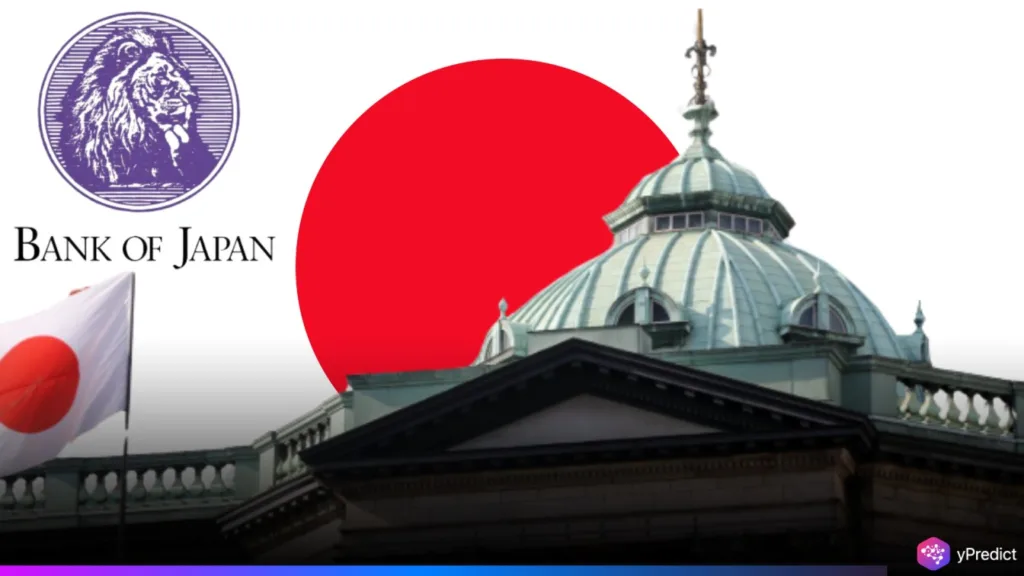
The Bank of Japan (BOJ) has opted to hold its benchmark interest rate steady at 0.5% while announcing a significant shift in its monetary policy trajectory by slowing the pace of bond tapering starting in fiscal 2026. This move reflects the central bank’s cautious approach amid persistent global risks, heightened volatility in Japanese Government Bond (JGB) markets, and uncertain inflation dynamics. As the BOJ continues its gradual exit from years of ultra-loose monetary policy, the decision underscores its commitment to maintaining financial stability without derailing economic recovery. Investors now turn to Governor Kazuo Ueda for further insight into the central bank’s outlook.
Cautious Taper Signals Market Sensitivity
Reuters reports that the Bank of Japan (BOJ) opted to maintain its key interest rate at 0.5% on Tuesday while announcing a measured slowdown in its bond purchase reductions, signaling a cautious approach as it continues to unwind years of aggressive monetary stimulus.
Faced with rising geopolitical tensions and global economic headwinds, including U.S. tariff policies and instability in the Middle East, the central bank is prioritizing market stability over rapid tightening. Its decision reflects a desire to minimize disruptions as it gradually normalizes policy following a decade of ultra-loose financial conditions.
Following a two-day policy meeting, the BOJ confirmed that it will continue to reduce government bond purchases by ¥400 billion every quarter until March 2026. However, starting April 2026, the bank will cut this reduction to ¥200 billion per quarter, intending to reduce monthly purchases to around ¥2 trillion by March 2027. This revised pace is consistent with market players’ feedback during recent conversations.
The central bank also plans an interim assessment of its tapering schedule during its June 2026 policy meeting. Notably, BOJ board member Naoki Tamura opposed the slower pace, advocating for continued reductions of ¥400 billion per quarter through fiscal 2026.
Market Reactions and Economic Indicators
Markets responded with cautious optimism. The yield on Japan’s benchmark 10-year government bond rose three basis points to 1.48%, and the 30-year yield, which recently surged to a multi-decade high, remained elevated at around 2.93%. The yen appreciated slightly to 144.55 per U.S. dollar, and the Nikkei 225 index advanced 0.55%.
The BOJ’s decision appears aimed at reassuring investors and maintaining stability after recent volatility in long-term bond yields. According to Mizuho Research & Technologies, the slower pace of tapering is likely to help contain upward pressure on long-term interest rates.
Inflation Pressures and Policy Outlook
Despite weaker growth forecasts, the central bank remains concerned about inflation, which continues to exceed its long-term target levels. Japan’s core inflation reached 3.5% in April, staying above the BOJ’s 2% goal for a thirteenth straight month. Rising food costs and labor shortages contributed to the surge, with food prices alone jumping 7% in April. A nationwide rice shortfall also pushed overall headline inflation to 3.6%, adding pressure on policymakers to respond decisively.
Governor Ueda signaled the BOJ is prepared to raise rates once inflation shows a more consistent path toward the 2% target, emphasizing a shift toward market-driven rates. However, economic headwinds persist, with Japan’s GDP contracting 0.2% in Q1 amid falling exports and unresolved trade tensions with the U.S.
Conclusion
The BOJ’s decision to slow tapering marks a strategic shift as it navigates an exit from years of ultra-loose policy. Despite ending yield curve control and negative rates, it lags global peers in balance sheet reduction, with assets at 120% of GDP. Investors now await signals on the next rate hike, as officials maintain a cautious outlook but expect inflation to align with the 2% target by March 2028. Governor Ueda will elaborate in his post-meeting briefing.







